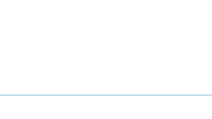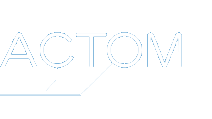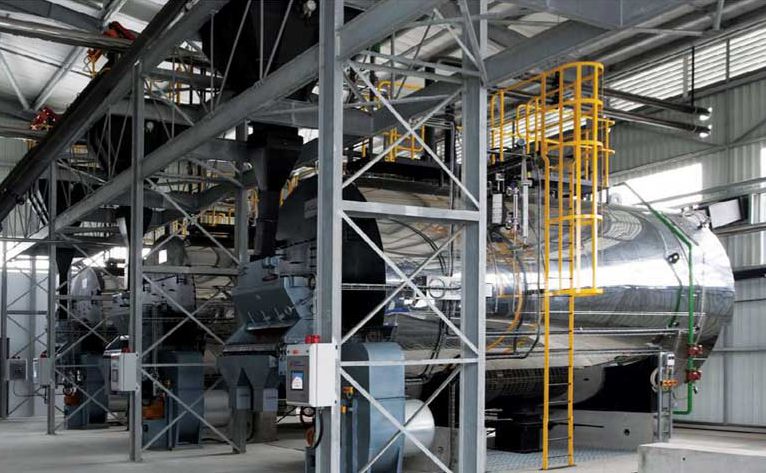Background
The Pressure Equipment Regulations (PER) of 2009, through its incorporation under section 44 of the Occupational Health and Safety Act (Act No.85 of 1993), mandate health and safety standards to be utilised in the design, manufacture, repair and modification of pressurised equipment.
Amongst the health and safety standards listed under SANS 347 Annex A the most widely used standards include the European Norm (EN), British Standard (BS) and American Society of Mechanical Engineers (ASME).
John Thompson explicitly makes use of EN standards in the design, manufacture and testing of its range of pressurised equipment because they are considered to be technologically advanced and progressive in their approach towards the health and safety concerns related to pressurised equipment.
The health and safety standard of choice for the design and manufacture of John Thompson’s range of package firetube steam boilers is EN 12953. This standard, which consists of 14 parts, regularly gets updates of the individual parts.
This article mainly focusses on EN 12953 Parts 2 and 3 to highlight advancements made to these parts to reduce risks associated with steam boiler design, operation and foreseeable misuse.
Significant changes to EN12953 Part 2
EN 12953 Part 2 specifies allowable materials for the pressure bearing parts of shell boilers and includes valves and other forged or cast products. The latest update to Part 2, comprising seven significant technical changes, was approved by the European Committee for Standardisation (CEN) in January 2012.
The prohibition of EN 10028-3 (weldable normalised fine grain steels eg. P355NH) plate for boiler furnace tubes was the technical change with the most substantial impact on the design of shell boilers. In addition, for low pressure boilers with a maximum saturation temperature of 120 °C and a design pressure below 10 bar (g), the use of material S235JR according to EN 10025-2 is now permissible. The use of bolting material in accordance with EN 1515 Part 4 and flange material to EN 1092 and EN 1759 Part 1 was also introduced.
Significant changes to EN12953 Part 3
EN 12953 Part 3 encompasses requirements for the design and calculation of shell boiler pressure parts, which dictates the dimensions of the pressure bearing parts. Part 3 was updated in November 2016.
The updates brought major paradigm shifts in the design of shell boilers, including the introduction of a requirement for the assessment of cyclic service and the determination of boiler fatigue life.
This addition requires that shell boiler manufacturers perform a detailed assessment of the boiler fatigue life should certain prescribed load cycle conditions not be met during the boiler’s normal life.
In addition, the number of start-ups and shutdowns (full load cycles) a boiler should be exposed to during its usable life is now restricted to 1000 cycles. This translates to a boiler life expectancy of approximately 20 years for a boiler operating 24 hours a day, five days a week, 52 weeks a year, with the boiler being shut down over weekends.
Another major change applies to the dimensional limitations enforced on shell boilers incorporating set-in end plates. It stipulates that these boilers may not have diameters in excess of 4,0 m, may not have maximum allowable pressures greater than 1 000 kPa and may not be longer than 8,8 m.
This new requirement supports the argument of the UK’s Safety Assessment Federation (SAFed) and the PER in that tee-welds used on set-in end plates of shell boilers are to be considered as critical welds due to their inherently high residual stresses, susceptibility to weld defects and adverse ability to act as crack initiation and/or propagation sites. This rule forces boiler manufacturers to use flanged end plates on larger boilers, which typically entail twin-furnace or high-pressure shell boilers. Manufacturers seeking to circumvent this requirement whilst still negating the high residual stresses and potential weld defects associated with the tee-joint welds used on set-in endplates are required to demonstrate acceptable boiler life through detailed fatigue assessment.
Design solutions adopted
In compliance with the requirements of EN 12953 Part 2, John Thompson only utilises steel grades conforming to EN 10028 Part 2 (non-alloy and alloy steels with specified elevated temperature properties). These elevated temperature steel grades are aluminium killed to ensure high levels of chemical homogeneity and pin grain boundaries in order to eliminate grain growth during heat treatment and hot forming processes. In addition, EN 10028 Part 2 steel grades are niobium treated to improve the fracture toughness through grain refinement, precipitation strengthening and microstructure.
John Thompson makes use of EN 13445 in order to meet the more stringent requirements of EN 12953 Part 3. This was achieved through an assessment of the cumulative damage caused by the cyclic load cases. Typical load cycles evaluated during a fatigue life assessment included load cases such as boiler commissioning, cold starts, hot starts, hydraulic pressure tests and warm starts.
John Thompson adopted a design-by-analysis approach using Finite Element Analysis (FEA) to obtain the structural or principal stresses required by EN 13445. The main objective of the fatigue analysis was to prove that the cumulative damage to the boiler due to cyclic loading was below the threshold value of unity.
Conclusion
The aim of health and safety standards is to eliminate or mitigate the potential dangers and risks associated with pressure equipment through the application of lessons learnt and technological advancements. As such, the onus is on manufacturers of pressure equipment to ensure that they only use the latest revisions of the health and safety standards for the design, manufacture and testing of their equipment.
The enhancements to EN 12953 Parts 2 and 3 ensure that only materials with the correct metallurgical properties and notch toughness are employed in boiler designs. In the case of boiler furnaces, which are exposed to high heat fluxes, the improper use of high strength fine grain materials without the prerequisite notch resistance could lead to catastrophic boiler failure. In short, a material’s ability to withstand high structural loads is not the only determining factor in material selection for boiler components.
A detailed fatigue assessment accompanied by a prescriptive operating and maintenance manual can assure boiler availabilities well in excess of the simplistic case of a 20-year fatigue life.
In general, fatigue life assessment involves a significant number of plant specific cyclic load cases which could dramatically reduce the boiler life. A comprehensive understanding of the boiler cyclic load cases should be communicated to the manufacturer at the boiler design stage in order to assess fatigue life and effect design changes aimed at mitigating the potential catastrophic effects of cyclic loads.
John Thompson is a division of ACTOM (Pty) Ltd, the largest manufacturer, solution provider, repairer, maintainer and distributor of electro-mechanical equipment in Africa. ACTOM employs over 7 500 people and has an annual order intake in excess of R7,5 billion.
Contact: Jacques Matolla
Engineering Manager – Package Boilers, John Thompson
Tel: 021 959 8400
jacquesm@johnthompson.co.za



